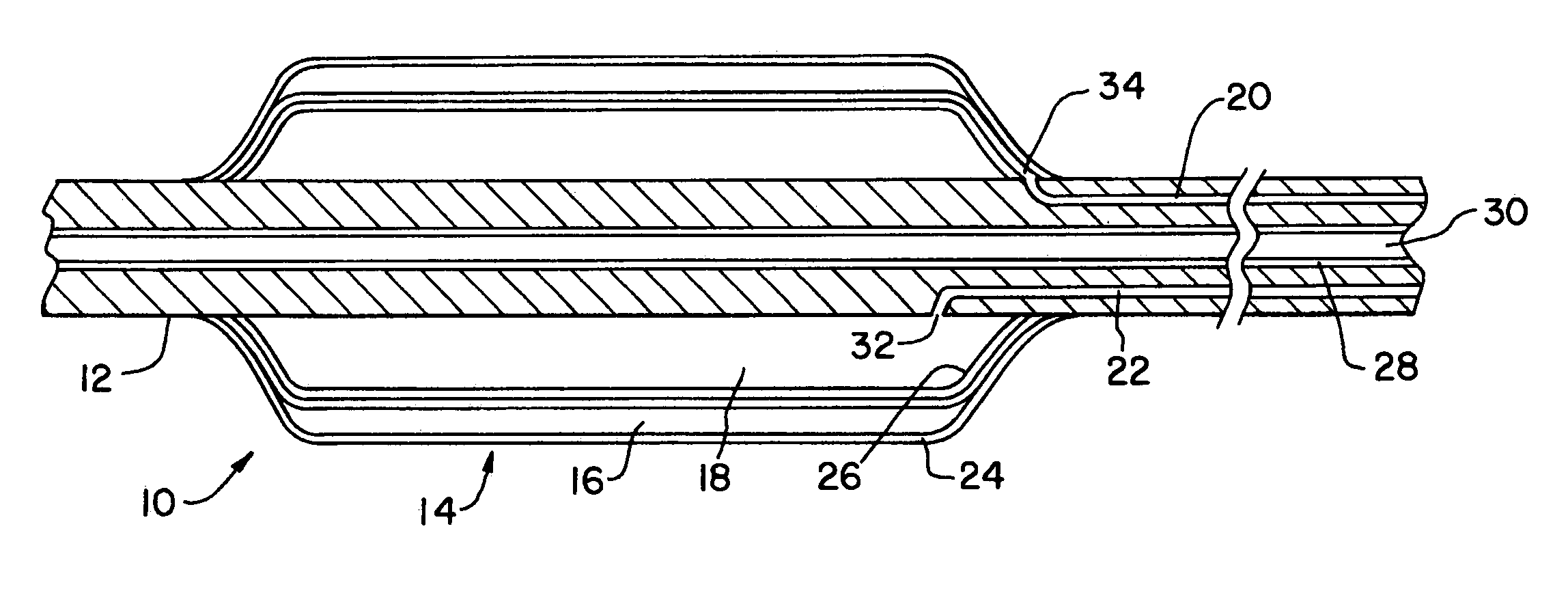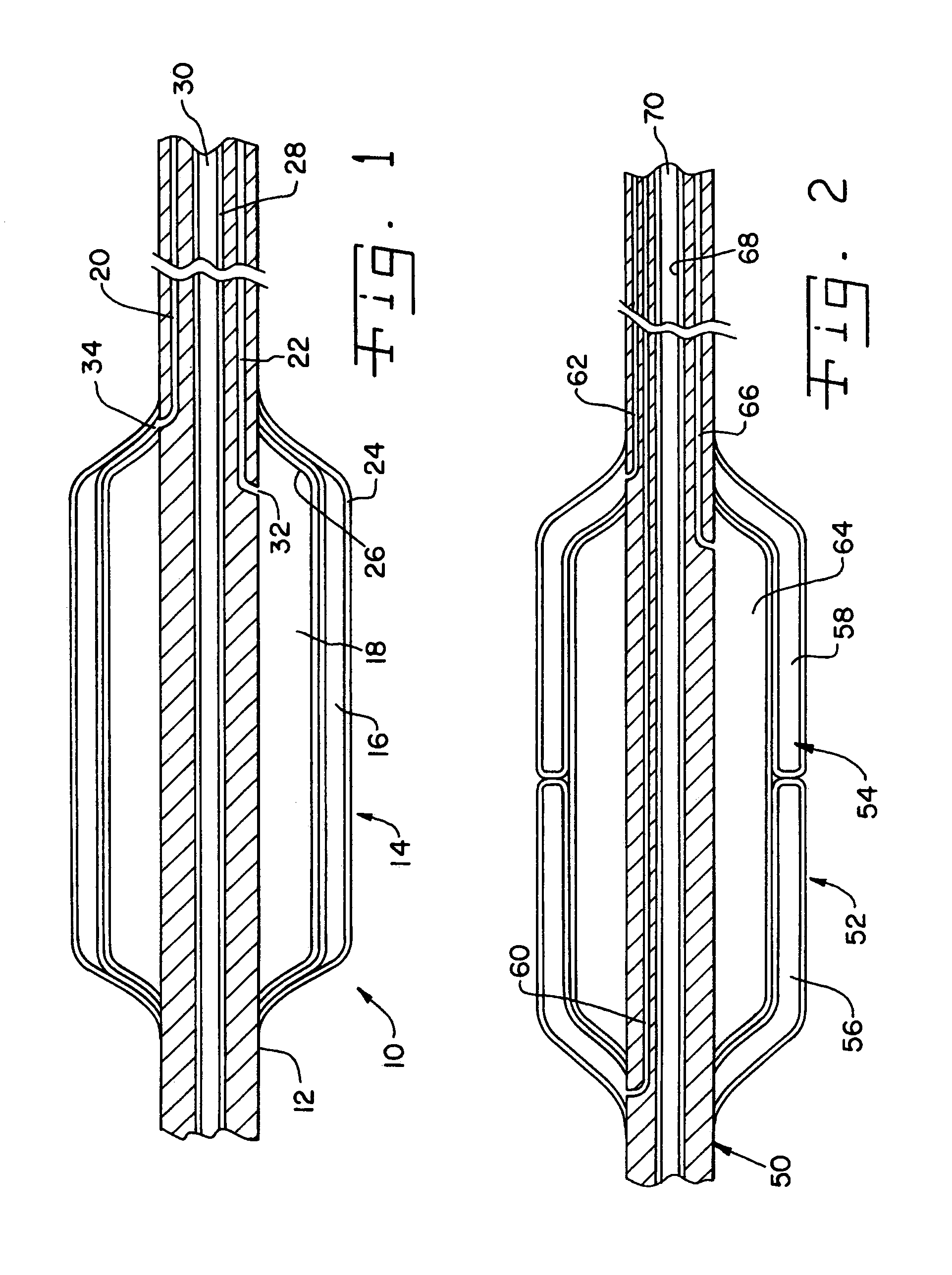Catheter with concentric balloons for radiogas delivery and booster radiosources for use therewith
a technology of concentric balloons and radiogas, which is applied in the field of medical devices, can solve the problems of insufficient shallow dose rate, inability to provide higher needed dose rate, and inability to provide shallow dose rate, etc., and achieve the effect of reducing the volume, constant spacing, and reducing the amount of radioactive gas required
- Summary
- Abstract
- Description
- Claims
- Application Information
AI Technical Summary
Benefits of technology
Problems solved by technology
Method used
Image
Examples
Embodiment Construction
[0024]FIGS. 1 to 7 disclose a concentric balloon arrangement of the present invention. FIGS. 8 to 13 illustrate booster radioactive sources of the present invention, for use with the concentric balloon arrangement of FIGS. 1 to 7, but could be used separately from the concentric balloon arrangement of the present invention. FIG. 14 is useful with all the embodiments of FIGS. 1 to 13.
[0025]As used herein, the term “fluid” includes any gas, liquid, or gel-type substance that generally conforms to the shape of the container within which it is held, and is fluent. While the catheter apparatus of the present invention is used in conjunction with a radioactive carrier fluid, it is preferred that the fluid is a gas, and for reasons hereinafter set forth, an inert gas, such as preferably xenon, or an isotope of xenon. However, the present invention is not limited to xenon gas or an isotope thereof, and the preferred fluid includes all gases and isotopes thereof, radioactive gases or radioga...
PUM
 Login to View More
Login to View More Abstract
Description
Claims
Application Information
 Login to View More
Login to View More - R&D
- Intellectual Property
- Life Sciences
- Materials
- Tech Scout
- Unparalleled Data Quality
- Higher Quality Content
- 60% Fewer Hallucinations
Browse by: Latest US Patents, China's latest patents, Technical Efficacy Thesaurus, Application Domain, Technology Topic, Popular Technical Reports.
© 2025 PatSnap. All rights reserved.Legal|Privacy policy|Modern Slavery Act Transparency Statement|Sitemap|About US| Contact US: help@patsnap.com



